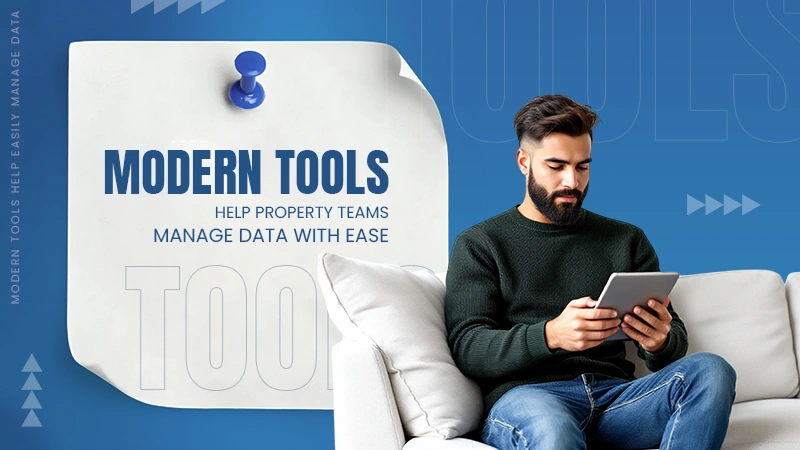AI in accounting and finance automates tasks, improves accuracy, provides deeper data insights for better strategic decisions, and enhances financial forecasting and fraud detection.
The Use of Data in Modern Financial Safety Nets

When your rent, gas, groceries, and internet bills all keep going up at the same time, have you ever wondered how people are supposed to plan for financial emergencies?
It’s not just you. Although “hope for the best, plan for the worst” may sound good on a poster, most people need practical tools and information to make that happen. Economic uncertainty seems to be here to stay.
In this blog, we will discuss how data is assisting in the transformation of contemporary financial safety nets and offer readers insightful information.
Let’s begin!
Key Takeaways
- Understanding the comparison of privacy and personalization
- Looking at the perfect blend of financial planning with real-time information
- Exploring the government’s online safety parameters
- Looking at the rise of predictive models in finance
Privacy Versus Personalization
Of course, all this hinges on trust. People aren’t going to share data freely unless they believe it’s being used responsibly. And this is where financial tech walks a tightrope. On one side, hyper-personalization requires deep insight into behavior. On the other, overreach raises questions about surveillance, discrimination, and digital boundaries.
The tension is real. Some platforms have gone too far, scraping too much information or selling data in ways users didn’t expect. That creates blowback. But others have doubled down on transparency, giving users control over what’s shared and when. These models are becoming more popular because they offer an ethical framework alongside the promise of better outcomes.
Users today aren’t just asking, “What does this tool do?” They’re asking, “What does it do with my information?”
Interesting Facts
As of April 2023, an estimated 85% of banks had adopted AI for some operations, with continued heavy investment in AI technologies through 2025.
When Financial Planning Meets Real-Time Information
Over the last decade, personal finance has shifted away from static advice and toward real-time data. People don’t just want tips anymore—they want numbers that respond to their lives. Tech companies got the message. Now, there are budgeting apps that sync with your bank in seconds, platforms that categorize your spending automatically, and tools that estimate your savings needs based on actual behavior, not theoretical charts.
One of the most practical uses of this shift shows up when people try to prepare for sudden loss of income or surprise costs. That’s where having the ability to calculate emergency fund requirements based on dynamic data—not just broad recommendations—makes a real difference. Instead of the old-school “save three to six months of expenses” line, people can look at their actual spending over time and project a more precise safety net.
This is not just about neat math. It’s about trust. When a tool reflects reality instead of guessing at it, people engage more. They’re more likely to take action. Additionally, because the goal initially appeared unattainable, they are more likely to make adjustments over time rather than give up completely. A solid emergency cushion isn’t built overnight, but knowing what the real number looks like makes it feel possible.
Government Isn’t the Only Safety Net Anymore
Once upon a time, people leaned heavily on government programs during hard times. Unemployment insurance, food stamps, rent relief—those things still exist and remain critical for many. But cracks in those systems have become more visible. During the pandemic, delays, backlogs, and inconsistent eligibility rules turned what should have been lifelines into bureaucratic puzzles. That moment revealed a bigger truth: most safety nets were not built to scale quickly or adapt well.
Enter private platforms, nonprofit fintech services, and digital tools that stepped up when formal systems slowed down. Some startups built apps to fast-track cash grants.
Others helped gig workers track inconsistent earnings to better forecast shortfalls. Certain programs even encouraged users to automatically save small sums by rounding up purchases and putting the difference away. These micro-movements are part of a broader trend—building resilience through tech that meets people where they are.
This shift doesn’t mean government support should vanish. It just means there’s a growing expectation that individuals will need more than one kind of net. And that data, not just dollars, is part of what will keep people afloat.
The Rise of Predictive Models in Personal Finance
Machine learning isn’t just powering your YouTube recommendations anymore. It’s being used to predict financial stress before it happens. Algorithms, fed by anonymized data from thousands or even millions of users, can detect patterns that humans might miss. For instance, a sudden drop in deposits combined with a spike in short-term borrowing often signals that someone’s headed toward a financial cliff.
Some banks and financial apps now use this insight to flag at-risk users and offer early interventions. That could be in the form of alerts, payment deferral options, or connections to financial counseling. Instead of waiting for someone to miss three payments, tools are beginning to anticipate that moment based on live data.
Is there risk in that? Sure. Bad data can lead to bad assumptions. But when done well, it can reduce harm by acting early. Think of it as an early warning system. You wouldn’t want a smoke alarm that only goes off once the kitchen’s in flames. You want it to chirp while the toast is still just too dark.
Real Preparedness Is Boring, Quiet, and Absolutely Necessary
The most effective safety nets don’t get headlines. They’re not flashy. They don’t promise 10x returns or instant fixes. They sit quietly in the background—ready to absorb the impact when life takes a hard turn. But what’s changing is how those nets are built. Instead of relying purely on personal discipline or luck, people now have access to tools that make preparation feel doable.
It’s still on the individual to take action. To save. To plan. To pay attention. But now, they don’t have to do it blindfolded. Data can’t prevent emergencies, but it can make them survivable. And in the world we’re living in—where layoffs, health scares, and wild price swings feel like regular headlines—that kind of quiet backup matters more than ever.
No app will make someone financially invincible. But if it can help them avoid overdrafting before payday, skip a costly mistake, or set aside $20 they didn’t know they had, that’s real impact. And it adds up.
So while the future of financial safety nets may not look like a check from the government or a call from your bank, it might look like an alert from your phone. A line on a graph, or a number you didn’t expect. This suddenly makes everything a little less uncertain.
Frequently Asked Questions
How is AI used in finance and accounting?
What are some benefits of predictive models in accounting?
AI in accounting provides benefits such as automating repetitive tasks for increased efficiency, improving accuracy by reducing human error.
What is the future of AI in accounting?
The future of accounting with AI involves automating routine tasks, enhancing data analysis, and shifting accountants from transactional work.
You don’t know how much you rely on your laptop until it acts up. The cursor stops moving. The fan…
Imagine this: You are juggling ten things—one tab for work, one for shopping, and one for that article you wanted…
The majority of engineering teams work at a much slower pace than they could because of systematic friction in their…
The dramatic evolution of eCommerce in the last decade has reshaped consumer expectations regarding speed, convenience, and sustainability. As a…
Payroll mistakes can lead to fines, delayed payments, and payroll disputes. These payroll issues can create pressure for high-risk businesses…
Property management teams can benefit from data in a number of ways. Everyone understands that it’s critical to make wise…
Fantastic things don’t just happen. They occur when teams transform hazy inputs into clear and actionable decisions for everyone, replacing…
There are lots of tasks that are generally very amusing and thrilling; however, bookkeeping is definitely not one of them.…
In the fleetly evolving geography of digital education, using slice- edge software development services are essential for creating poignant literacy…




